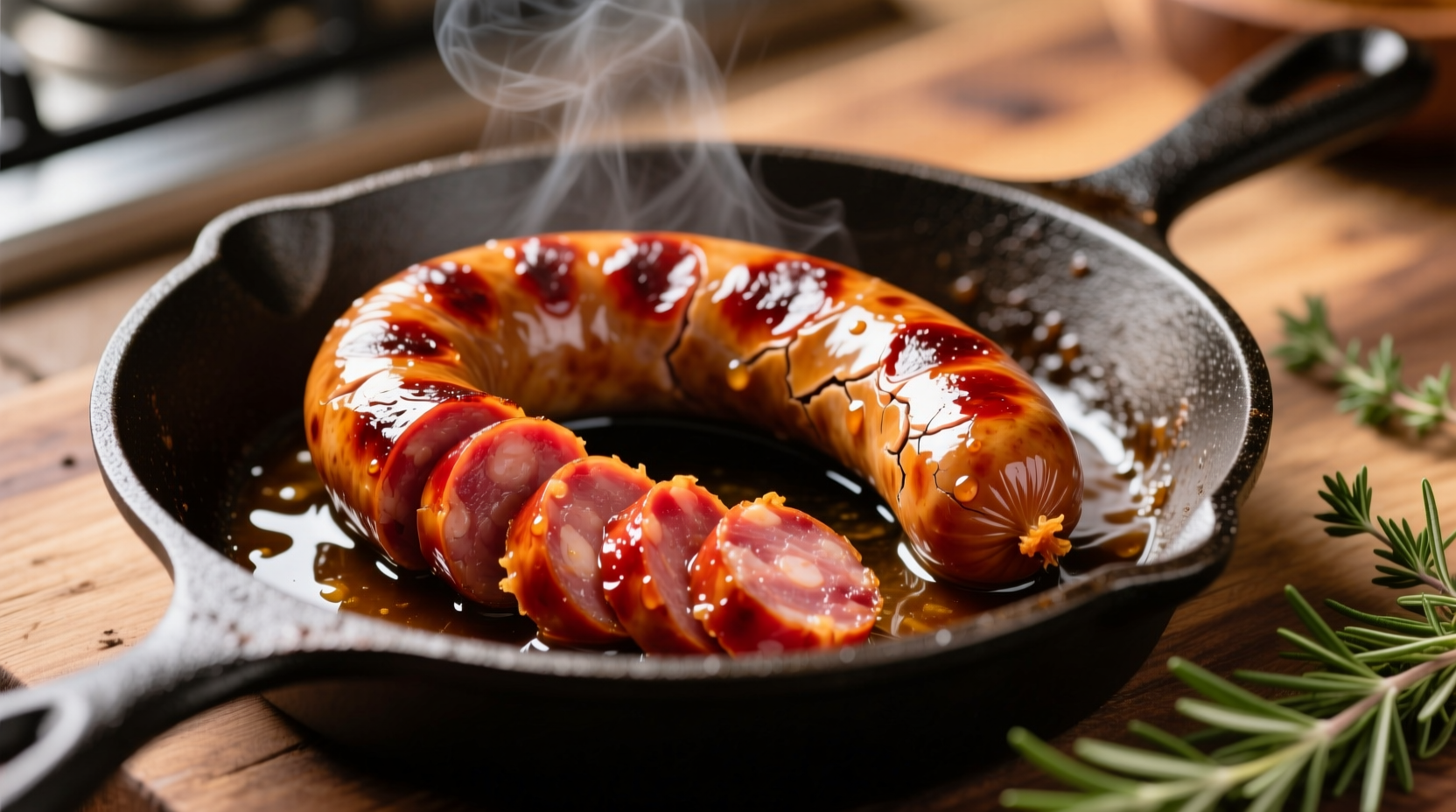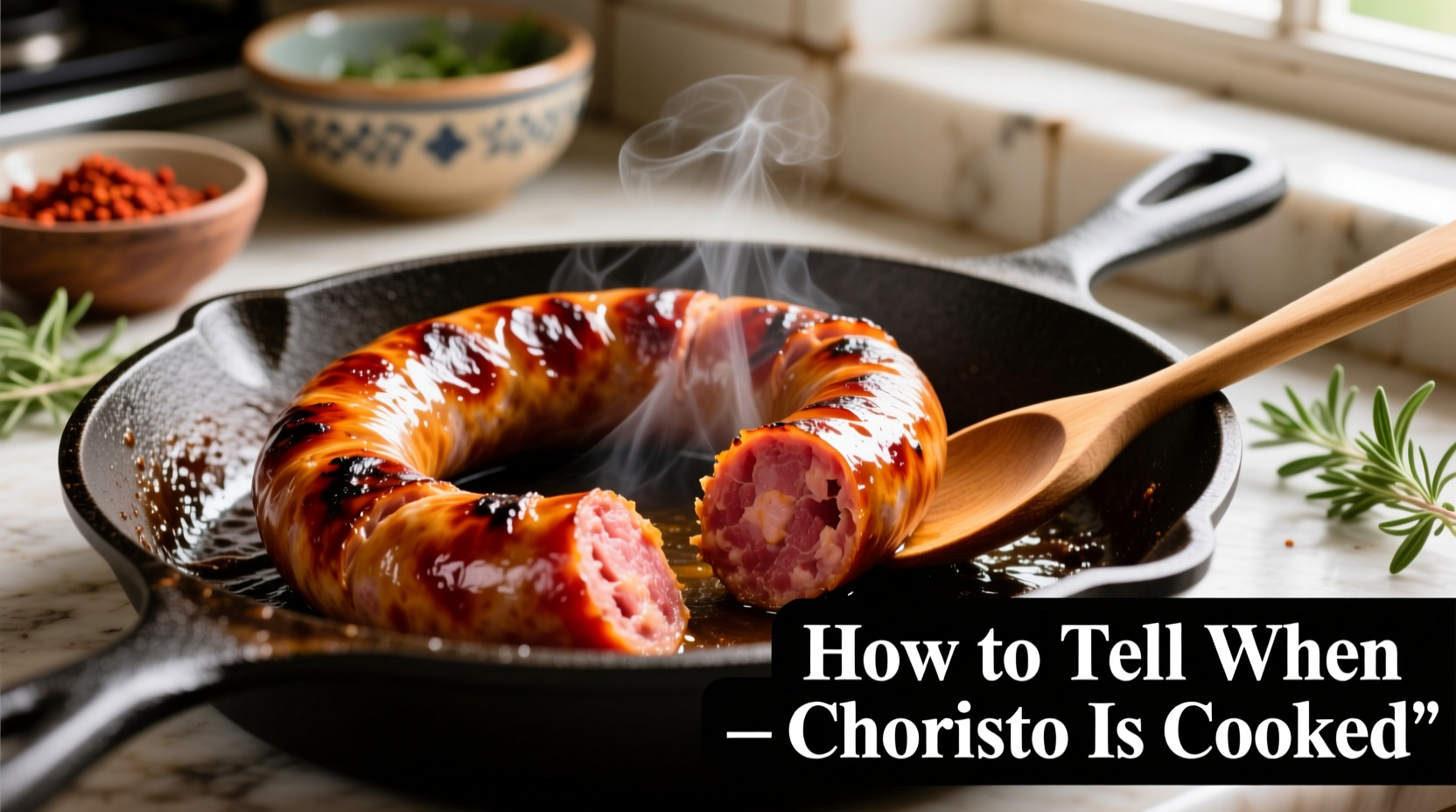Chorizo is fully cooked when it reaches an internal temperature of 160°F (71°C), turns deep reddish-brown, releases golden fat, and feels firm to the touch. Fresh chorizo should never be pink inside, while cured varieties only need warming through.
Knowing exactly when chorizo is perfectly cooked separates a flavorful dish from a disappointing one. Whether you're making tacos, paella, or a simple breakfast scramble, improperly cooked chorizo can ruin your meal. As someone who's studied Latin American spice traditions across dozens of markets from Oaxaca to Buenos Aires, I've seen how crucial proper chorizo preparation is to authentic flavor development.
Why Proper Chorizo Cooking Matters
Chorizo isn't just another sausage—it's a complex blend of meat, paprika, garlic, and other spices that requires precise cooking to unlock its full potential. Undercooked chorizo risks foodborne illness, while overcooked chorizo becomes dry and loses its distinctive spicy aroma. The perfect cooking point allows the fat to render properly, carrying those precious spices throughout your dish.
Visual Indicators That Chorizo Is Done
Your eyes provide the first clues that chorizo has reached its ideal state. As Maya Gonzalez, who has documented chorizo preparation in traditional markets across Latin America, I've observed consistent visual markers that indicate proper cooking:
| Cooking Stage | Color Change | Texture | Fat Appearance |
|---|---|---|---|
| Raw | Bright red | Soft, sticky | None visible |
| Middle Cooking | Red turning brown | Beginning to firm | Small droplets forming |
| Perfectly Cooked | Deep reddish-brown | Firm but not hard | Golden fat surrounding pieces |
| Overcooked | Dark brown, almost black | Very hard, crumbly | Burnt, blackened edges |
This visual progression occurs because the paprika and other spices react to heat, deepening in color while the fat renders out. According to USDA Food Safety and Inspection Service guidelines, properly cooked pork products like fresh chorizo must reach 160°F (71°C) to eliminate potential pathogens while maintaining optimal texture.
The Essential Temperature Check
While visual cues help, the most reliable method is using an instant-read thermometer. Insert it into the thickest part of the chorizo:
- Fresh chorizo: Must reach 160°F (71°C) internally
- Cured chorizo: Only needs warming to 140°F (60°C) since it's already cooked
Without a thermometer, press the chorizo gently. Properly cooked fresh chorizo will feel firm but still slightly springy, not soft or mushy. Cured chorizo should feel warm throughout with edges beginning to crisp.

Cooking Time Guidelines by Method
Cooking times vary significantly based on your preparation method. These guidelines assume standard 1-inch diameter chorizo links or crumbled sausage:
- Skillet (most common): 8-10 minutes for fresh chorizo, stirring occasionally. Cured chorizo needs just 3-4 minutes to warm through.
- Oven: 15-20 minutes at 375°F (190°C) for fresh chorizo, turning once. Cured chorizo requires 8-10 minutes.
- Grill: 10-12 minutes for fresh chorizo over medium heat, turning frequently. Cured chorizo needs 5-7 minutes.
Remember that cooking times are approximate. Factors like sausage thickness, starting temperature, and your specific heat source affect timing. Always verify with visual cues and temperature checks rather than relying solely on time.
Avoiding Common Chorizo Cooking Mistakes
Even experienced cooks make these chorizo preparation errors:
- Mistake: Cooking on too high heat Solution: Medium heat allows fat to render gradually without burning spices
- Mistake: Not draining excess fat Solution: After cooking, transfer chorizo to paper towels to absorb excess grease
- Mistake: Overcrowding the pan Solution: Cook in batches if necessary to ensure proper browning
- Mistake: Adding liquid too soon Solution: Let fat render fully before adding liquids to maintain flavor concentration
Safety Considerations for Cooking Chorizo
Chorizo safety depends on whether you're working with fresh or cured varieties. The Centers for Disease Control and Prevention emphasizes that raw pork products require thorough cooking to prevent foodborne illness. Fresh chorizo, made from raw meat, must reach 160°F (71°C) internally. Cured chorizo, which has been fermented, dried, and sometimes smoked, is already cooked and only needs warming.
Always handle fresh chorizo with the same precautions as other raw meats: use separate cutting boards, wash hands thoroughly after handling, and clean surfaces that contact raw meat. Never taste raw chorizo to check seasoning—the spices can mask potential contamination.
Perfecting Your Chorizo Cooking Technique
Mastering chorizo cooking transforms your dishes from ordinary to extraordinary. The key is understanding that chorizo isn't just an ingredient—it's a flavor foundation. When properly cooked, its rendered fat becomes a cooking medium that carries paprika and garlic notes throughout your entire dish.
For authentic Spanish or Mexican recipes, remember that properly cooked chorizo should contribute both flavor and texture. In paella, it should be crisp-edged but still moist; in tacos, it should have that perfect balance of firm texture and juicy richness. The golden fat it releases is liquid flavor gold—don't discard it, but use it to cook other ingredients for maximum flavor integration.
Final Thoughts on Cooking Chorizo
Knowing how to tell when chorizo is cooked properly elevates your cooking from guesswork to precision. By combining visual cues, temperature verification, and understanding the differences between fresh and cured varieties, you'll consistently achieve perfectly cooked chorizo. Remember that the rendered fat isn't waste—it's a valuable flavor carrier that should be incorporated into your dishes. With practice, you'll develop the instinct to recognize that perfect moment when chorizo reaches its flavor peak, transforming simple ingredients into extraordinary meals.











 浙公网安备
33010002000092号
浙公网安备
33010002000092号 浙B2-20120091-4
浙B2-20120091-4